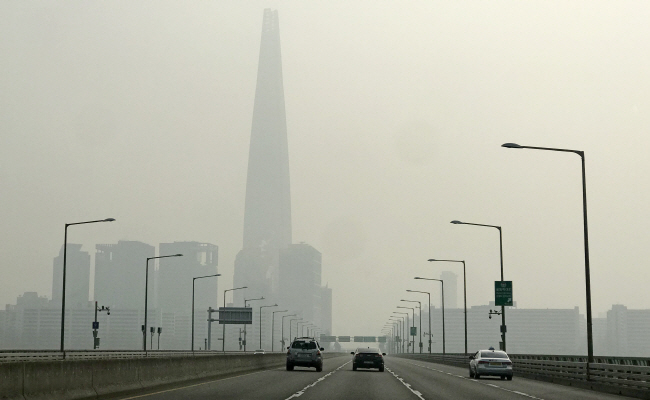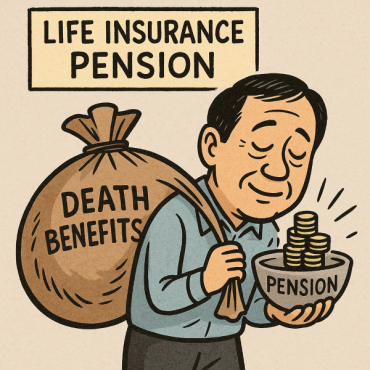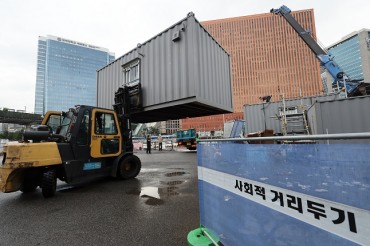
The sky over Seoul, seen from the Jamsil Grand Bridge on the Han River, is thick with fine dust on Jan. 14, 2019. (Yonhap)
SEOUL, Dec. 27 (Korea Bizwire) — South Korea aims to cut the country’s annual average level of ultrafine dust particles by 30 percent by 2032, the environment ministry said Tuesday.
Under the latest countermeasure to tackle the nation’s worsening air pollution problem, the government aims to reduce the annual average density of ultrafine dust particles to 12 micrograms per cubic meter by 2032 from 18 micrograms per cubic meter tallied in 2021.
Ultrafine particles are smaller than 2.5 micrometers in diameter and are also known as PM 2.5. The class one carcinogen is found in dust, soot and smoke.
The measure is the third of its kind, following the second one targeted for 2016-2025.
In accordance, the nation’s annual average density of ultrafine dust particles in 2021 was reduced from 26 micrograms per cubic meter tallied in 2015, the ministry said.
Regardless, the tally is still above the highest average annual emission level recommended by the World Health Organization.
The previous recommendation was 10 micrograms per cubic meter but the revision was halved to 5 micrograms per cubic meter in 2021.
The country’s tally for 2021 also hovers above an average annual tally by members of the Organization for Economic Cooperation and Development, the ministry said.
In order to achieve the goal for the next 10 years, the government will come up with measures to improve the seasonal fine dust management program.
The government aims to supply more zero-emission vehicles so that the accumulated number tops 2 million by 2027 and 4.5 million by 2030.
Also, the government plans to additionally ban Grade 5 diesel vehicles, the lowest in the country’s five-tier emission standard, in the cities of Gwangju, Daejeon, Sejong and Ulsan by 2030.
Currently, Grade 5 diesel vehicles are banned across Seoul and its neighboring areas from December-March every year.
(Yonhap)






